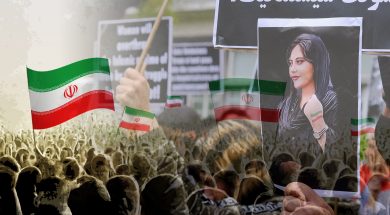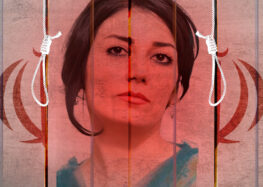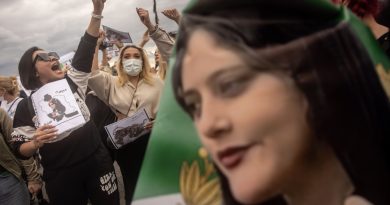In the streets of Tehran, in the prisons of Qarchak and Evin, and across social media platforms, Iranian women are courageously fighting a brutal regime that has long tried to silence them. Armed with little more than their voices, their presence, and their unwavering belief in freedom, these women have become the face of resistance and the soul of Iran’s freedom movement.
From journalists and lawyers to students and mothers, women freedom fighters have endured harassment, imprisonment, torture, and death threats — not for crimes, but for demanding dignity and equality. Their courage is not only inspiring a generation within Iran, but galvanizing a global wave of solidarity that sees in their struggle a universal call for justice.
This analysis introduces and honors some of the most influential female figures in Iran’s modern resistance, detailing their backgrounds, the risks they’ve taken, and the impact of their fight.
1. Narges Mohammadi: The Voice That Won’t Be Silenced
Profession: Human rights activist, journalist
Current status: Imprisoned in Evin Prison
Key contributions:
• Vice President of the Defenders of Human Rights Center in Iran
• Advocate against the death penalty and solitary confinement
• Winner of the 2023 Nobel Peace Prize
Analysis:
Narges Mohammadi has become a global symbol of moral resistance. Her continuous activism, even from inside prison, challenges the regime’s attempt to erase dissidents. Despite numerous arrests and long sentences, she has written extensively about prison conditions, torture, and the rights of female prisoners, exposing the Islamic Republic’s darkest corners.
Her Nobel Prize has forced the world to pay attention to the gender-based repression orchestrated by the state and its security forces, notably the IRGC and the intelligence apparatus.
2. Masih Alinejad: The Digital Face of Defiance
Profession: Journalist, activist, founder of #MyStealthyFreedom
Current status: In exile (United States)
Key contributions:
• Initiated online campaigns encouraging Iranian women to defy hijab laws
• Target of multiple IRGC-backed assassination and kidnapping plots
• International speaker and advocate for designating the IRGC as a terrorist group
Analysis:
Masih Alinejad embodies the power of the digital revolution in resistance. From exile, she’s created platforms that amplify the voices of Iranian women who refuse to be invisible. Her work has become a thorn in the side of the regime, showing how even outside Iran’s borders, freedom fighters can destabilize authoritarian narratives.
The regime’s obsession with silencing her — from smear campaigns to attempted abductions — only validates her global influence and the threat she poses to their propaganda machine.
3. Sepideh Gholian: Unyielding in the Face of Fear
Profession: Journalist, labor rights activist
Current status: Imprisoned (multiple times)
Key contributions:
• Reported on labor protests in Khuzestan
• Publicly confronted the regime by chanting anti-Khamenei slogans upon release from prison
• Symbol of courage among young activists
Analysis:
Sepideh’s story is one of raw bravery. Despite multiple arrests, torture, and psychological warfare by the IRGC, she returns each time with stronger defiance. Her refusal to back down — even outside prison gates — has made her a heroic figure among both youth and workers, proving that fear cannot cage truth.
4. Nasrin Sotoudeh: The Woman Who Defended the Defenseless
Profession: Human rights lawyer
Current status: Temporarily released; health in critical condition
Key contributions:
• Defended women arrested for removing hijabs
• Spent years in prison for her legal work
• Sentenced to 38 years in prison and 148 lashes
Analysis:
Nasrin Sotoudeh has long been Iran’s legal backbone for women’s rights.
Her choice to represent political prisoners and prisoners of conscience, despite knowing the consequences, exemplifies legal courage under tyranny. Her high-profile sentencing drew global condemnation and highlighted the regime’s vindictiveness toward principled resistance.
5. Atena Daemi: Defender of Human Rights and Children
Profession: Civil rights and anti-death penalty activist
Current status: Released in 2022 after years in prison
Key contributions:
• Advocated against capital punishment
• Went on multiple hunger strikes to protest prison conditions
• Spoke out against IRGC’s abuses from inside prison
Analysis:
Atena represents the voice of Iran’s conscience. Her activism focused on vulnerable populations — children, prisoners, minorities. Her resilience in the face of harsh treatment and her refusal to remain silent — even while suffering deteriorating health — solidified her role as one of Iran’s most respected freedom fighters.
6. Niloufar Hamedi: The Journalist Who Broke the Mahsa Amini Story
Profession: Journalist
Current status: Imprisoned since 2022
Key contributions:
• First to report on Mahsa Amini’s death
• Provided photos of Amini’s family grieving in hospital
• Charged with “collusion against national security”
Analysis:
Niloufar’s reporting ignited a revolution. By sharing the truth of Mahsa Amini’s brutal death, she became an unwilling symbol of truth-telling under oppression. The IRGC’s swift move to silence her illustrates just how threatened the regime is by transparency. She remains imprisoned, a political prisoner for telling the truth.
7. Bahareh Hedayat: From Student Movement to Women’s Rights
Profession: Student leader, activist
Current status: Frequently arrested
Key contributions:
• Prominent role in the 2009 Green Movement
• Advocate for prisoners’ rights and gender equality
• Continues to write and speak out despite repeated detentions
Analysis:
Bahareh is a bridge between generations of resistance. Her leadership started in student movements and has since evolved into broader civil rights advocacy. Her story proves that resistance doesn’t end in prison — it adapts, matures, and continues.
8. Saba Kord Afshari: Defying Hijab, Defying Fear
Profession: Activist
Current status: Released in 2023 after serving years
Key contributions:
• Removed hijab in protest, filmed and shared online
• Arrested and sentenced to 24 years
• Became a symbol of bodily autonomy and defiance
Analysis:
Saba’s story is closely linked to the movement for bodily autonomy in Iran. Her action — removing her hijab in public — was powerful not just in what it protested, but in what it represented: the right to choose. The IRGC’s reaction showed how deeply threatened the regime is by visible acts of feminine defiance.
Common Themes Among Iran’s Women Freedom Fighters
1. Fearlessness
Despite facing state violence, prison, torture, and exile, these women continue to lead.
2. Unshakable Belief in Justice
Each figure is committed not just to women’s rights, but universal human rights, from labor justice to anti-death penalty work.
3. Global Impact
Their stories have crossed borders, influencing policy, media coverage, and global feminist movements.
4. Targeted by the IRGC
All these women have been specifically targeted by the IRGC and security forces — a clear sign of their threat to authoritarian power.
Why Their Leadership Matters Now More Than Ever
As protests continue to ebb and flow across Iran, the role of women remains constant — not as supporters, but as leaders. They are shaping a new narrative, one that rejects fear and submission, and instead embraces justice, equality, and dignity.
These women are not just survivors of repression — they are visionaries of a future Iran. Their leadership is intersectional, rooted in shared struggle, and deeply connected to Iran’s broader democratic aspirations.
Conclusion: The Revolution Wears a Woman’s Face
The fight for freedom in Iran has many faces, but time and again, it is the faces of women that stand out — bruised but unbroken, censored but louder than ever. These women freedom fighters are not only resisting a regime — they are redefining what Iran can become.
Join Our Newsletter!
Stay informed with the latest updates, news, and ways to take action in the fight for justice and global security. Sign up now to get updates delivered straight to your inbox!





